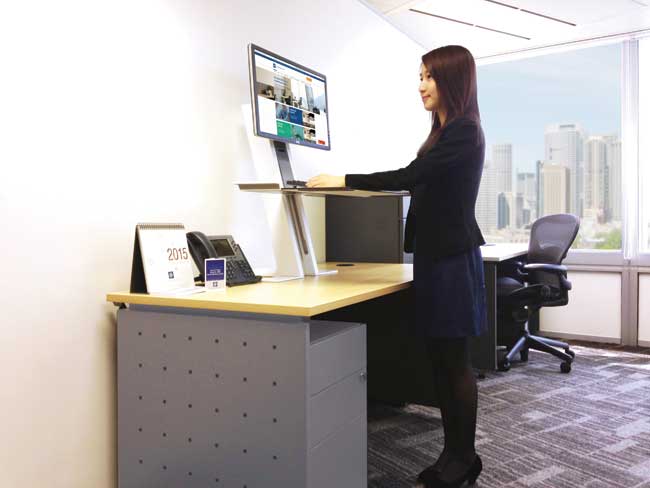Standing Revolution: Office space designs promoting wellness at workplace It is estimated that people spend 1,500 hours or more than 200 days per year in the office, but spend most of this time sitting.
By Gigi Liu
Opinions expressed by Entrepreneur contributors are their own.
You're reading Entrepreneur India, an international franchise of Entrepreneur Media.

Nowadays, companies are increasingly prioritising employees' needs and well-being while making business and real estate decisions. With respect to the global trend of "flexible" workplace and working practices becoming the mainstream solutions to improve productivity, boost profitability and enhance motivation through better work-life balance. The market demand for flexible workplace furniture is gathering momentum. Today, firms like Google, Facebook and Twitter are embracing the shift towards standing desks and flexible space.
Evolving workstation ergonomics
According to The Executive Centre's recent survey, which interviewed more than 500 business executives on their ideal flexible workplace, the findings showed a collective keen desire for a flexible workplace that achieves both high performance and work-life well-being, and a consensus that flexible workplace furniture such as a height-adjustable desk can play a key role in fostering health and well-being.

Standing desks are nothing new and have been around for centuries. Yet with changing technology and work paradigm, office workstation ergonomics is evolving continually and the trend of adopting ergonomic furniture has been rediscovered.
It is estimated that people in the workforce spend 1,500 hours or more than 200 days per year in the office, but spend most of this time sitting. Several medical reports already alleged the dangers of prolonged sitting, and an article published in the American Journal of Preventative Medicine last year even claimed that "there was a linear relationship between greater amounts of sedentary time and mortality risk".
Boost Productivity
More recently, the impact of standing desks on health has been quantified, with fewer medical issues, less back problems, increased energy, higher calorie burn and lower risk of cardiovascular disease and cancer being some of the various benefits that have been documented scientifically by stand-up adopters. Some research studies, whose metrics are a sophisticated blend of science and social movements, even indicate that office workers can be 10 per cent more productive when offered the option to stand.

Working while standing is no longer seen as an eccentric work habit, and is fast-becoming a work trend. With several studies to confirm the health and psychological benefits of standing desks, a number of companies appreciate the growing needs from the workforce and have invested in flexible workplace furniture and adjustable workstation equipment. Not only does it enhance ergonomics, but it also improves work productivity.
A common feature in standing desks is a height-adjustable, motorised desk, which provides users a wide range of flexibility to alternate between sitting and standing postures. Standing desks may come with touch motorised controls to lower or raise the desk as needed, and may also be designed as an attachment for the existing desk, as a monitor stand and keyboard tray that can be adjusted. Some desks may have a wider base to fit in treadmills underneath, allowing users do some exercise while working.
Achieving better balance and flexibility
Nevertheless, office furniture and equipment tailored for standing while working will not be the ergonomic workplace solution of everyone's choice on the ground that plainly standing all day may be as unhealthy as sitting all day. Everything needs to be a balance.












